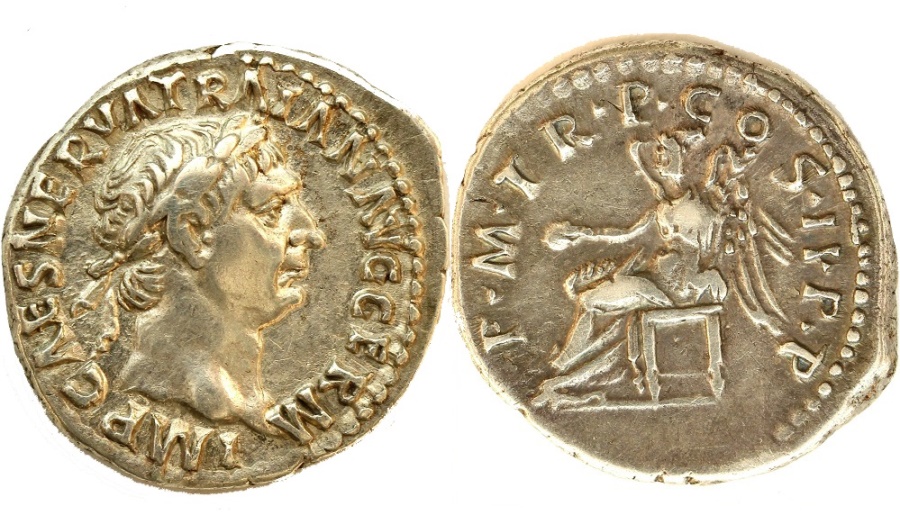

It has the head of Tiberius on the obverse and the radiate head of Augustus, his deified predecessor, on the reverse. It is the only silver coin minted at Antioch by Tiberius during the lifetime of Jesus. Which being a Roman coin, and currant amongst the Jews, being then in fubjection to the Romanes, it is more then probable that they paid their tribute to. Roman Silver Denarius Random Emperors (69 AD -244 AD) Good-Fine 5 - 9, 78.99, 79.81 10 - 14, 77.99, 78.80 15 - 19, 76.99, 77.79 20 +, 75.99, 76.78.

It was shown to him because the Jews found it objectionable and they wanted to get his reaction. The Jews probably paid the Roman tax in Tyrian coins, and the coin shown to Jesus in Mark 12.15 was most likely a tetradrachm, a silver coin minted at Antioch, the administrative capital of the Roman province of Syria.

A persistent feature was the inflationary debasement and replacement. 1 From its introduction to the Republic, during the third century BC, well into Imperial times, Roman currency saw many changes in form, denomination, and composition. None have been found in the hordes of coins discovered in Jerusalem and surrounding areas. Roman currency for most of Roman history consisted of gold, silver, bronze, orichalcum and copper coinage. She is generally thought to be Livia, Tiberius’ mother.Īfter investigating the matter, I came to the conclusion that the coin for the Roman tax could not have been a denarius because there is no evidence that denarii circulated in Judea at that time. It has the head of Tiberius on the obverse and a seated woman on the reverse. The Roman tax was generally thought to be the common silver coin, called a denarius, which was minted at Lugdunum (Lyon) in Gaul during the reign of the Emperor Tiberius. They did not have the Emperor’s head on them. The silver coins required for the temple tax were minted at Tyre, which was the commercial centre of the region. The taxes had to be paid in silver coins, but the Romans allowed the Jews to mint only bronze coins and, according to Jewish law, it was forbidden for them to make coins with human images on them. These splendid old coins were debased over the years and in AD 215 the double Denarius, named the Antoninianus, was issued.

After asking whose head was on the coin he said, “Give to Caesar what is Caesar’s, and to God what is God’s.” In the Roman province of Judea at that time, the Jews paid a tax to the Romans and a tax for the upkeep of the temple in Jerusalem. The coins of the Roman Empire began with the first Emperor Augustus on the obverse in 41 BC, with the primary coins being the Silver Denarius and the bronze As. Its mission includes using coins, manuscripts and other items in religious education, and I have enjoyed taking displays to a number of church schools in recent years.įor Christians the most famous coin is the one held by Jesus in Mark 12.15. Compositional mapping and single point analysis using Brukers M4 TORNADO micro-XRF shows that the. It is a non-profit organisation and the director is The Very Rev’d Dr Gregory Jenks, Dean of Grafton. M4 TORNADO Ag-intensity map of a silver Roman denarius coin. Other articles where denarius is discussed: coin: Introduction of the denarius: Adjustment of the previously fluctuating relationship between bronze and silver was first secured by the issue about 211 bc of the silver denarius (marked Xi.e., 10 bronze asses), together with fractional coins, also of silver (marked Vi.e., five and IISi.e. 1 Aureus 2 Gold Quinarii 25 Denarii 1 Denarius 2 Silver Quinarii 4 Sestertii 8 Dupondii. Our reproduction and replica Roman coins include As, Aureus, Denarius, Dupondius, Sestertius and Solidus.Since retiring from medical practice, I have been able to spend more time on my coin studies and I have become a researcher for the Centre for Coins, Culture and Religious History. Denarius, Reform of Augustus (27 BC AD 215). This trend continued to the end of the Empire in the West. After the reforms Roman coinage consisted mainly of the gold solidus and small bronze denominations. They were still accepted as payment in Greek influenced territories, even though these regions issued their own coinage and some silver in other denominations, either called Greek Imperial or Roman provincial coins.ĭuring the third century, the denarius was replaced by the antoninianus or radiate, which was then itself replaced during the monetary reform of Diocletian which created denominations such as the argenteus (silver) and the follis (silvered bronze). These were used from the middle of the third century BC until the middle of the third century AD. The Roman currency during most of the Roman Republic and the western half of the Roman Empire consisted of coins including the aureus, the denarius, the sestertius, the dupondius, and the as.


 0 kommentar(er)
0 kommentar(er)
